How To Plant And Care Hibiscus: Expert Tips For Location And Propagation
In order to plant hibiscus and enjoy its bloom, you need to know a lot about this ornamental plant. We have helpful tips ready for you. It is a real eye-catcher in any garden, but can also shine visually in the house. Hibiscus, which originates from Asia, belongs to the mallow family (Malvaceae) and decorates the windowsills and flower beds of many amateur gardeners with its colorful and expansive blossoms.
The often bicolored blossoms shine in the richest colors – from delicate white to strong purple. There are many different types of hibiscus, all of which have different requirements for cultivation and care. We tell you what you need to pay attention to when growing hibiscus. The hibiscus makes high demands on its location. This involves both the quality of the substrate, as well as sunlight. We explain step by step how the hibiscus likes it best.
How To Choice The Best Place To Plant Hibiscus
Table of Contents
A nutrient-rich soil with a balanced sand-loam ratio is ideal for planting hibiscus. Enriching the topsoil with compost is advisable, as this promotes flower formation in the summer. At the same time, the pH should be in the neutral to the very slightly acidic range. It is important that especially the outdoor garden hibiscus is located in a full sun place. The Rose Hibiscus, or also called Rose Marshmallow (Hibiscus Rosa-Sinensis), is mainly kept as an indoor plant in our country. This genus of hibiscus also likes it very sunny. However, for winter dormancy, you should place it a little more shaded.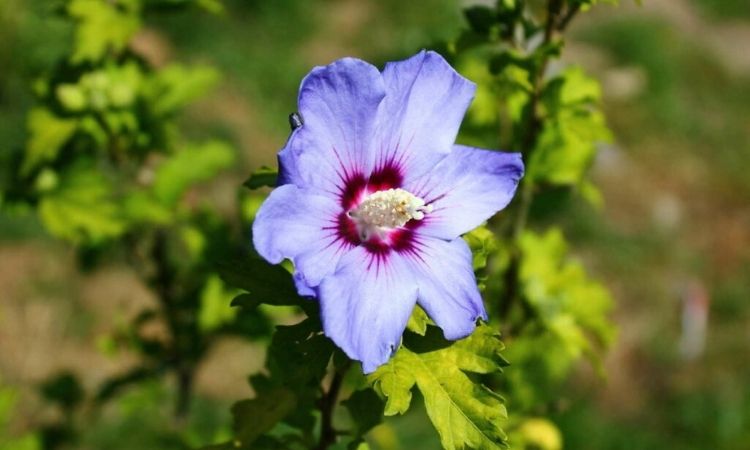
Planting Time
As soon as you can hope for warmer temperatures in the spring, the hibiscus should be planted out. This is because in the first year or two it is not yet very hardy, which is why the longest possible establishment period until winter will have a positive effect.
The Procedure
If you want to plant a garden hibiscus, you should have had a good breakfast. The excavation for the garden hibiscus, which can grow up to three meters high, should be at least twice the size of the root ball. In addition, it is advisable that the excavated soil is well loosened and enriched with a little compost. If you prefer to grow the smaller variety, i.e. rose hibiscus, in a pot as a houseplant, you don’t have to exert so much effort and can simply choose a pot that is large enough.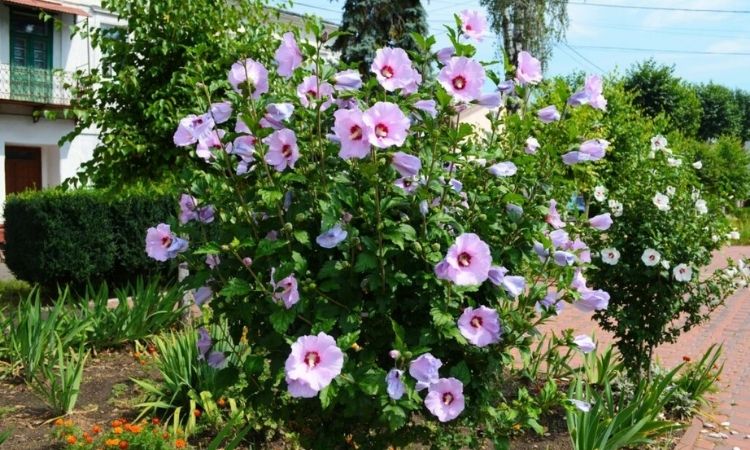
Propagate Hibiscus Yourself: By Seed Or By Cuttings?
There are several ways to propagate your own hibiscus. Whether you should rather resort to seeds or cuttings depends on your experience and especially on your patience. We provide helpful tips on propagating hibiscus below.
You might so like: Hibiscus: All The Tips For The Perfect Bloom
Sowing Hibiscus Seeds
By the end of summer, hibiscus seeds are ripe and ready to drop. If you want to sow your own hibiscus seeds next year, simply collect the small, bristly seeds. You should lightly score the seeds before sowing and then cover them lightly with compost to grow in a pot. To prevent the light seeds from floating away when watering, you can also moisten the planting soil with a spray bottle.
You should start sowing early in the year so that the plants develop sufficiently. In any case, place the hibiscus in a warm, sunny place during the germination phase. Of course, you can also buy hibiscus seeds. Bags of about 100 are available from $2.50 at well-stocked specialty stores or mail-order companies.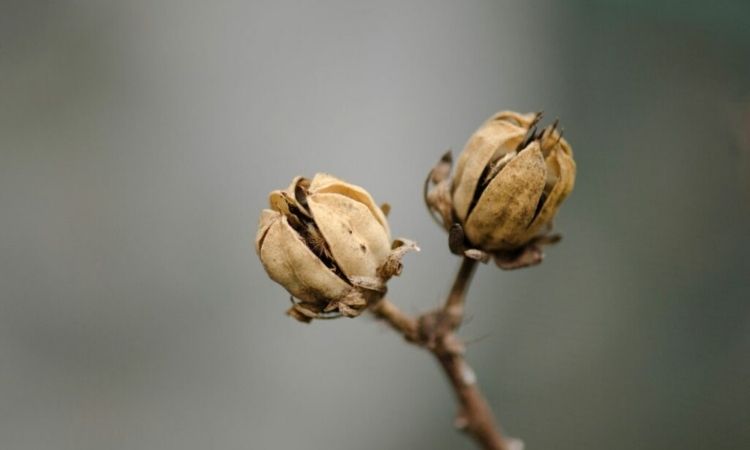
Propagate Hibiscus Through Cuttings
Another way to propagate your beloved hibiscus is to grow cuttings. For propagation by cuttings, cut approximately 15 cm long shoots with at least three buds or eyes from the desired plant.
You might so like: Cutting Hibiscus: Tips And Tricks For The Perfect Cut
These must then be wetted with rooting powder and then placed in small pots with special growing soil. It is important that the soil and especially the air are kept moist until the first strong roots have formed.
Another possibility is the propagation via cuttings or offshoots. Here, individual shoots are bent towards the ground and brought into contact with the soil at one point (cuttings) or completely sunk into the soil with the shoot tip. Roots form where the shoot touches the soil. Both laying down and sinking create independent plants, which in turn you can place where they will look the best.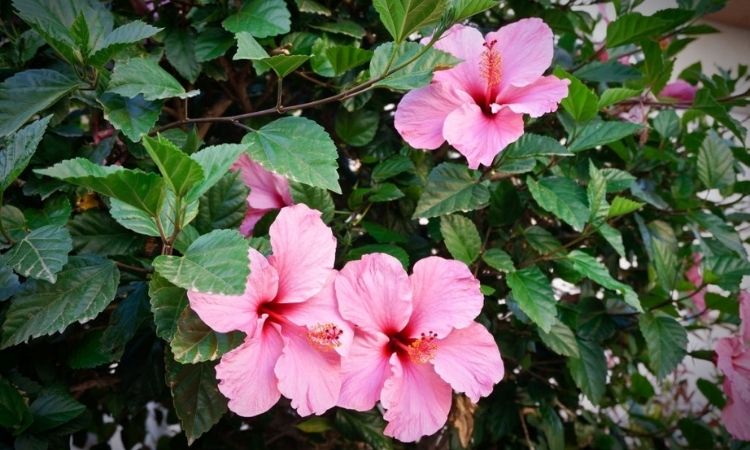
Expert Tips For Perfect Care
The hibiscus should convince in your own garden with its wonderful flowers. In order for this to succeed, attention should be paid to proper care. Hibiscus has no special requirements for its care. However, to ensure optimal youth development and flowering, you should pay attention to a few things. We explain how best to care for your garden flowers.
Watering And Fertilizing Hibiscus
The hibiscus needs sufficient water, especially in the young stage, so that it can grow well. Therefore, water it regularly so that the soil is always kept moist. However, be careful to avoid waterlogging – your hibiscus doesn’t like it at all! By avoiding waterlogging, you also prevent rotting of the main shoot and roots.
In spring the hibiscus can be fertilized regularly with mainly organic fertilizer. This promotes soil life, provides long-term nutrients, and is also environmentally friendly. Regular fertilization will pay off in lush blooms.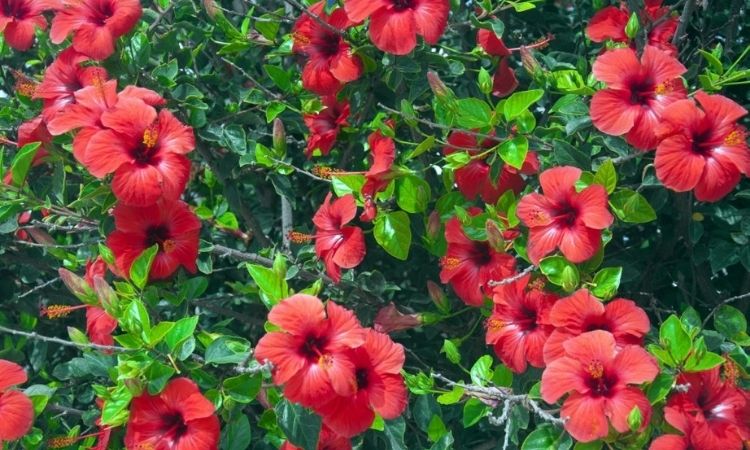
The most important for proper hibiscus care in a nutshell:
- Water generously (nevertheless avoid waterlogging!)
- Keep soil moist
- Regular fertilizing before flowering
Pruning Hibiscus: Tips And Tricks For The Perfect Cut
The hibiscus delights with its intensely colored flowers. Regular pruning promotes its growth and also enables special growth forms.
When Is The Best Time?
Whether garden hibiscus rose hibiscus or giant hibiscus: the best time for pruning is in late winter or early spring. Usually, one chooses a date between early and mid-February for hibiscus pruning. At this time, the plants are at the beginning of the growth phase, so pruning will not deprive them of their strength. In addition, at the beginning of vegetation, the right pruning can most effectively promote the formation of shoots and branching.
Pruning Correctly
When pruning hibiscus, it depends on what species it is. In the case of rose hibiscus (Hibiscus Rosa-Sinensis), which is mostly kept as a houseplant, you regularly do educational pruning. After the hibiscus has flowered, the shoots are cut in half to achieve a higher branching. The more branched the rose hibiscus, the more abundant the flowering.
The perennial hibiscus, also called giant hibiscus, is also pruned only once. For this, the side shoots are shortened by half, so that they branch better. Furthermore, maintenance pruning is also useful for the purpose of shaping. In addition, side shoots that sprout close to the ground is often removed to prevent the perennial from becoming too spreading.
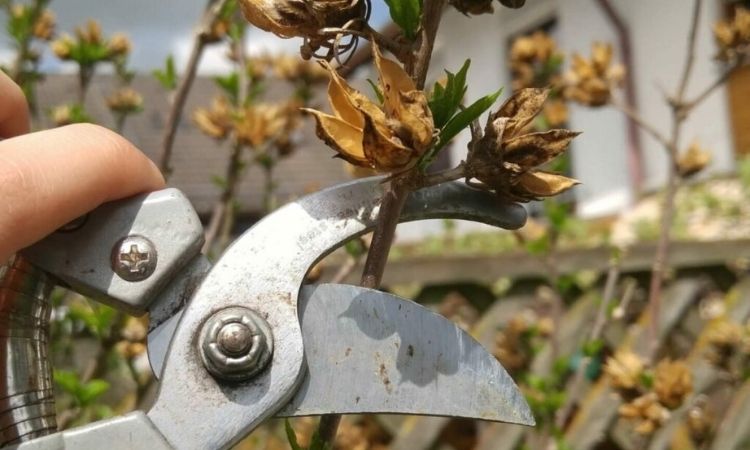
Garden hibiscus (Hibiscus syriacus) can be pruned in several ways. First, maintenance pruning is done in the spring to encourage branching and maintain the shape of the crown. All other pruning is done to shape it. You’ll learn how this works and what you need to keep in mind in the next section.
Rejuvenation and/or maintenance pruning should be done regularly on all hibiscus species. Rejuvenation involves radically cutting back bulky growing shoots. Maintenance pruning is more for removing dead plant material without interfering too radically with the growth of the hibiscus.
Pruning Hibiscus As A Tall Trunk Or Stem
There are several pruning methods to determine the shape of the hibiscus. The garden hibiscus is often pruned as a tall trunk or stem. In this shaping pruning, you remove all but the top three to four of the side shoots along the main stem. The high trunk cut requires a lot of patience because this process must often be repeated several years in a row until the hibiscus has reached the desired growth height.
Now begin to shorten the side shoots of the crown, so that they in turn branch. The uppermost shoot of the crown is cut off at about half its length and tied upwards with a thin wire as an extension of the trunk. Repeat this process until a well-formed crown is formed. By the way, the shoots along the stem must always be removed.
Fertilizing is also an important care measure for hibiscus that should not be neglected. So that your plant shows itself in its full flowering glory, we have summarized for you everything important about fertilizing hibiscus.
Hibiscus Successfully Overwinter
The garden hibiscus (Hibiscus syriacus) is quite hardy and under certain conditions manages to overwinter outdoors. This makes it the only species capable of doing so in our latitudes. If you have planted your garden hibiscus in a tub, then you can take the precaution of moving it into the warm if extremely cold conditions are announced. If your garden hibiscus is planted in a bed, then you can protect it from excessive ground frost by placing a generous layer of bark mulch around the main shoot.
The most important facts about wintering hibiscus in a nutshell:
- The garden hibiscus can be overwintered outdoors.
- Support it with a thick layer of bark mulch at the base
- A one-year acclimation period in the tub will not hurt

Protect Hibiscus From Pests And Diseases
The hibiscus, especially as a houseplant, is often attacked by aphids. These infest the leaves and suck the phloem (plant sap) there. From their abdominal glands, they secrete a sugary secretion that gums up the entire leaf surface. In case of heavy infestation, the leaves turn yellow and die. Regular rinsing or treatment with organic pesticides helps against aphids.
The spider mite is another common pest that leaves small webs on the underside of leaves. The pattern of damage is similar to that of aphids. Spider mites can be controlled well with organic plant protection products.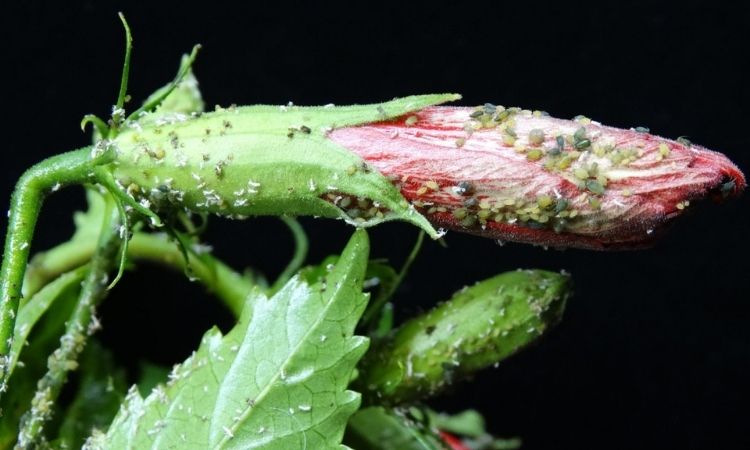
Non-animal pathogens, such as the leaf spot fungus, can also attack the hibiscus. You can recognize the infested areas by the brownish discoloration. Remove infested leaves, there is no need for further treatment.
The most important facts about pests and diseases of hibiscus in brief:
- Aphids and spider mites are common pests.
- Control by rinsing
- Regularly remove infested and dead plant parts
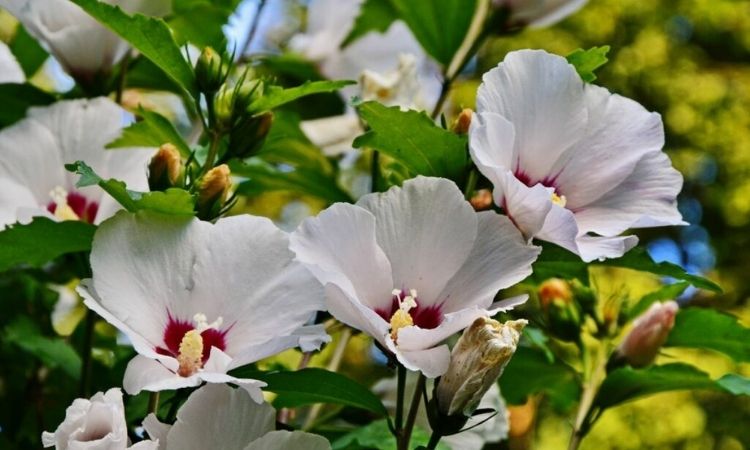
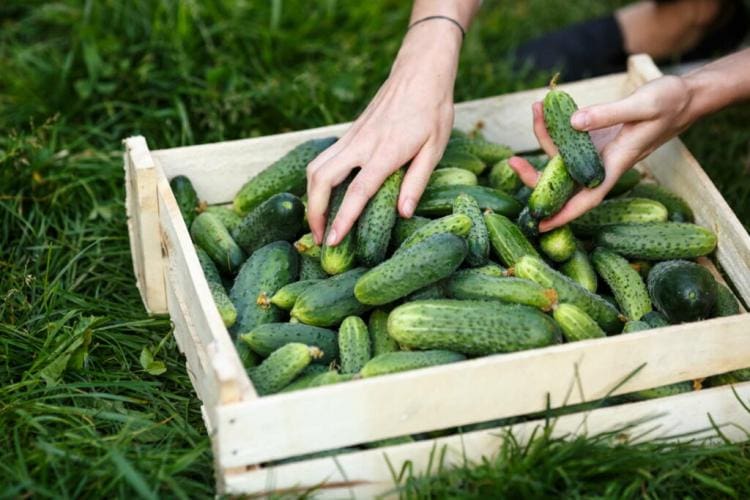
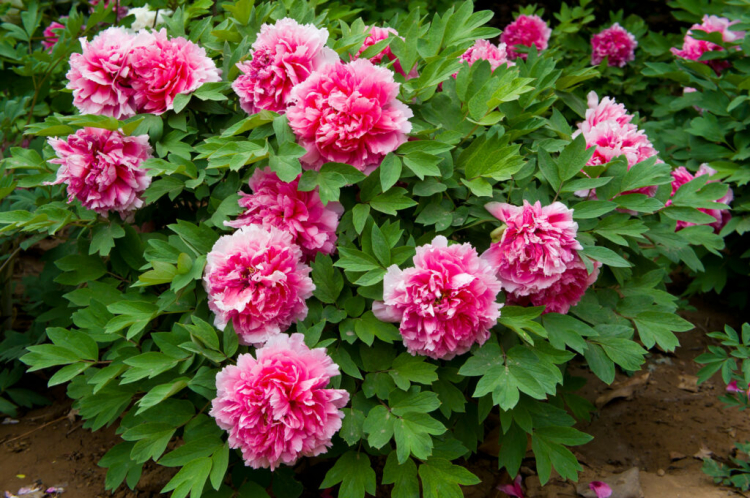
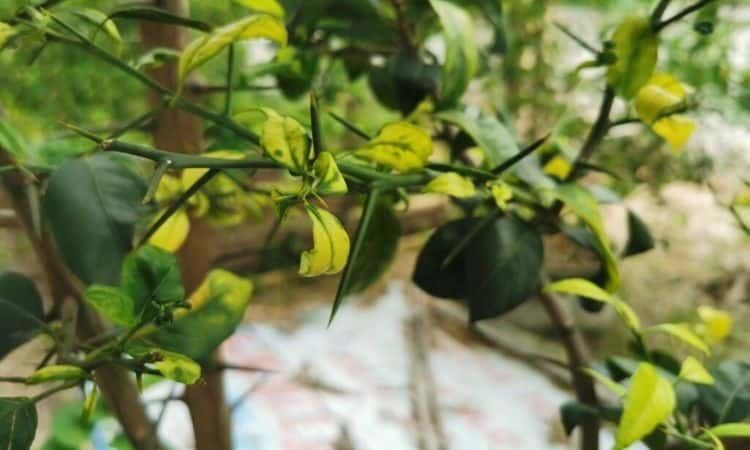
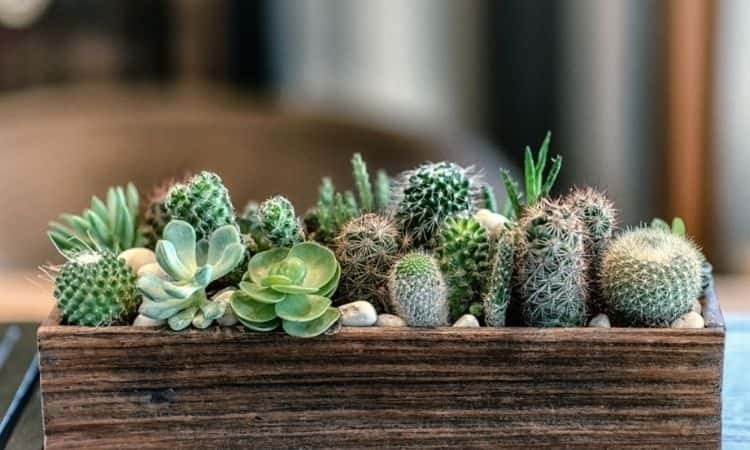
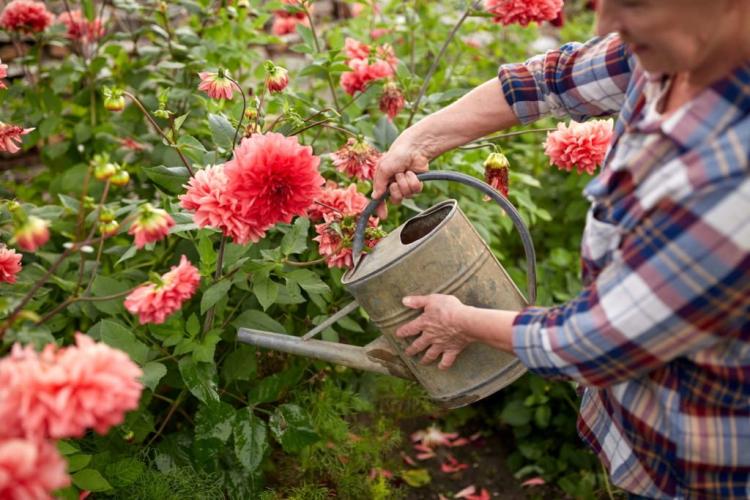

Along the gulf coast you can’t grow hibiscus unless you use a systemic insecticide to keep the midges under control. I use one and without it I would get no blooms at all. However, I am concerned about the health of the hummingbirds and other nectar loving wildlife. Can a systemic insecticide harm them?
The hibiscus I have grows beautiful green leaves, then they turn yellow & fall off. There are no insects. It has good drainage. What can I do? Should I prune all the branches & see if it responds? Help